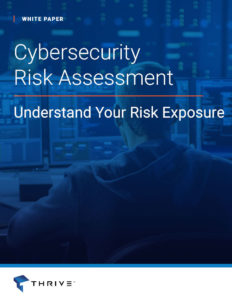White Papers
06.06.22
Cybersecurity Risk Assessment
Cybersecurity risk management applies to business entities in every vertical. Whether you’re in finance, healthcare, education, or beyond, it is vitally important to regularly assess your information technology assets in order to know your organization’s security posture on an ongoing basis. Especially when signing up for a cybersecurity insurance policy, insurers need to know where an organization’s risk profile currently stands and the steps they’re taking to proactively mitigate cyber risk on an ongoing basis.
A Cybersecurity Risk Assessment involves:
- Taking a look under the hood to assess a company’s technology infrastructure
- Identifying potential vulnerabilities
- Verifying that controls are put in place to minimize organizational risk and maximize information security.
Download our Cybersecurity Risk Assessment Guide to understand how best to calculate your cybersecurity risk exposure.
DOWNLOAD our white paper today!

